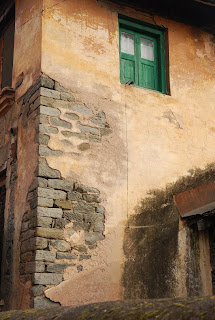The family from jillander who give us a ride insist that we are now family. Of course we should squeeze into their little car and with effort pack our cases in back with theirs. Our ride through the mountains down to Pathankot was a jolly time. Bushan waited for us, coming from Delhi on the night train several hours before. He tells us his family is waiting to greet us. We hug our new Jillander family goodbye and move on to meet the next one. Two families of relatives live side by side in neighboring houses. Four generations of people welcome us so warmly. The women cook lavish meals, the young boys proudly show us the neighborhood. So much friendship.
The next day we took the train a short distance to Amritsar. Again we were treated so lovingly by Bushan's brother and his wife. Amritsar is the Holy city of the Sikh Faith. We were amused by the names of some of the stores like Simran Shoes, Satguru Electronics - and the less inspiring Dreamland Resort, sitting right next to a chemical plant spewing obnoxious smoke. Over three busy days, we saw the main points of interest.
The Jallianwallah Memorial
Jallianwallah is a moving memorial at the site of the 1919 massacre. It began as a peaceful demonstration ordered by Mahatma Ghandi against the Rowlatt Act which enabled imprisonment of Indians suspected of sedition without trial. No one had guns. At the order of the Brisith General Dwyer, 2,000 Indians were shot to death and many more injured. The site is now a beautiful garden but with several gruesome reminders: the narrow passage way where the soldiers entered blocking any exit; the bullet holes in the brick wall where people were shot in the back as they scattered; the well where 150 perished when they jumped in for cover. The event prompted Ghandi's civil disobedience campaign and ultimate liberation from the British. Looking at the many photographs and newspaper coverage of the event, I felt ashamed of my heritage.
Golden Temple
Westerners are allowed to visit the Golden Temple - the spritiual center of Sikh faith - after covering the head and washing feet. The marble temple has a large lake, in the center of which sits the golden inner sanctum. The best times to go are at sunrise or in the evening when the Sikhs are singing bhajans - devotional songs. We went in the evening; despite the crowds of visitors and pilgrims it was surprisingly peaceful. I was awed at the fierce looking turbaned Sikhs sitting quietly in prayer beside the lake.
Bedlam at the Border
Amritsar is only 27 km from the Indian Pakistan border and every evening at sunset it is closed in a flag lowering ceremony with much pomp and ceremony. Indian guards wearing elaborate costumes with plumed hats perform synchronized speed markcing along a 100 meter walkway to the border gateway, turn and stomp back. A guard lives his feet so high, he hits his hat. The crowd cheers raucously. Then the Pakistani guards emulate - and try to outperform - the Indian efforts, while the Parkistani crowd yells spiritedly. National music blasts on both sides while the crowd dances in patriotic enthusiasm. The flag lowering ceremony is turned into an opportunity for a disturbing (to us) show of extreme emotional patriotism. It was intriguing to watch the Pakistanis on the other side, women in black burkhas, men in simple white cotton suits - but otherwise they looked no different from the Indian crowd.
We say goodbye to our gracious hosts at 4.30 am and take our last train ride to Delhi. For the last time, we step over the sleeping bodies and listen to the familiar voice over the PA system announcing the arrival of each train with: "For your kind attention..."



























